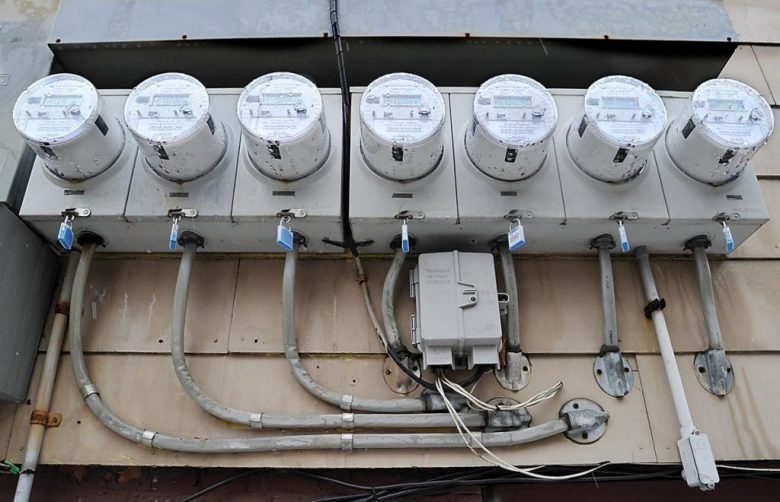Most homes and small businesses in Maine should prepare for a significant increase in electricity supply costs starting in January 2026. An analysis conducted by Competitive Energy Services, a consulting firm based in Portland, projects that approximately 90% of Maine households participating in the state-run standard offer program will experience a rate hike of around 15%. This increase corresponds to an estimated additional cost of about $8 per month for the average home.
This expected rise in supply rates will occur independently of a separate proposal from Central Maine Power (CMP), which is currently under review by the Maine Public Utilities Commission (PUC). CMP has sought to increase its distribution rates to fund upgrades to its aging infrastructure, a move that has sparked considerable opposition from consumers already grappling with inflation. By early October, the PUC received a record 617 public comments reflecting public discontent over the proposed increases.
Andrew Price, president and CEO of Competitive Energy Services, noted that affordability is becoming a critical issue for consumers, stating, “There’s definitely outrage out there with CMP’s proposed distribution increases. The supply hike is going to feel like there’s some piling on.” As rising electricity rates become a national concern, the federal Energy Information Administration reported that consumer prices for electricity have surged by 13% since 2022 and are expected to rise again.
The anticipated rise in Maine’s electricity supply costs largely stems from escalating wholesale natural gas prices, rather than external factors like artificial intelligence or CMP’s distribution case. As the United States emerges as the world’s largest exporter of liquefied natural gas (LNG), projections indicate that LNG export volumes could double by 2030. This shift, aligned with former President Donald Trump’s goal of enhancing American energy dominance, is contributing to increased natural gas prices, which negatively impacts energy consumers in New England.
Approximately half of New England’s electricity is produced by plants that utilize natural gas, making the region particularly sensitive to fluctuations in gas prices. Philip Bartlett, chair of the PUC, emphasized the link between natural gas and electricity prices. “It’s fair to say that electricity prices track natural gas prices,” he stated, indicating that any increase in gas prices will likely be reflected in electricity costs.
Electricity supply rates in Maine have been notably volatile, influenced heavily by the natural gas market. For the past 25 years, Mainers have sourced their electricity supply from an unregulated market, which has led to significant fluctuations. Rates have ranged from about 6 cents to 16 cents per kilowatt-hour. Following a dip during the pandemic in 2020, prices surged after Russia’s invasion of Ukraine disrupted global energy markets. Currently, standard offer supply rates stand at roughly 11 cents per kWh for CMP and Versant Power’s Bangor Hydro District.
Maine’s total electric rates have increased at the third-fastest rate in the United States between 2014 and 2024, primarily due to the volatility of natural gas prices. The Maine Department of Energy Resources attributes this rise to several factors, including a generous solar reimbursement policy and the costs associated with repairing delivery infrastructure after severe weather events. Notably, the region’s constrained gas pipeline system exacerbates price swings, particularly during the coldest winter months.
As the demand for electricity continues to rise, natural gas has become the dominant fuel source in the United States, meeting approximately 42% of electricity needs. However, escalating LNG exports have begun to influence electricity prices nationwide. Data from the Institute for Energy Economics and Finance Analysis indicates that the volume of gas exports now exceeds half of what is consumed by American power plants, indicating a shift in domestic energy dynamics.
Despite the growing concerns over rising energy costs, not all stakeholders agree on the impact of LNG exports on domestic prices. The American Petroleum Institute recently highlighted a report from S&P Global that found LNG exports did not significantly affect residential gas prices, though the report did not specifically address electricity rates.
Heather Sanborn, Maine’s public advocate for utility customers, stated that her office receives daily inquiries from residents worried about affordable electricity. She noted that the state has limited strategies to address supply costs but supports exploring alternative procurement methods as endorsed by AARP Maine. Recent legislative measures direct the PUC to solicit bids more frequently and for varying contract lengths to mitigate rate volatility.
While Bartlett acknowledged that the PUC had contracted a study on procurement strategies, he suggested that the recommendations would not lead to substantial reductions in supply costs. A report outlining the findings is expected to be presented to the legislature in January.
Looking to the future, both Sanborn and Bartlett pointed out that increasing the region’s renewable energy capacity, such as solar and wind, could help stabilize prices over time. Solar energy, in particular, has the potential to reduce reliance on gas plants during peak demand periods, such as hot summer afternoons. However, support for renewable energy initiatives has diminished, particularly under the previous administration, which favored fossil fuel development over clean energy projects.
The ongoing challenges surrounding electricity supply rates in Maine reflect broader trends affecting energy consumers across the nation. With rising costs and growing concerns about energy affordability, the need for effective solutions has never been more urgent.
This article was originally published by The Maine Monitor, a nonprofit and nonpartisan news organization.







